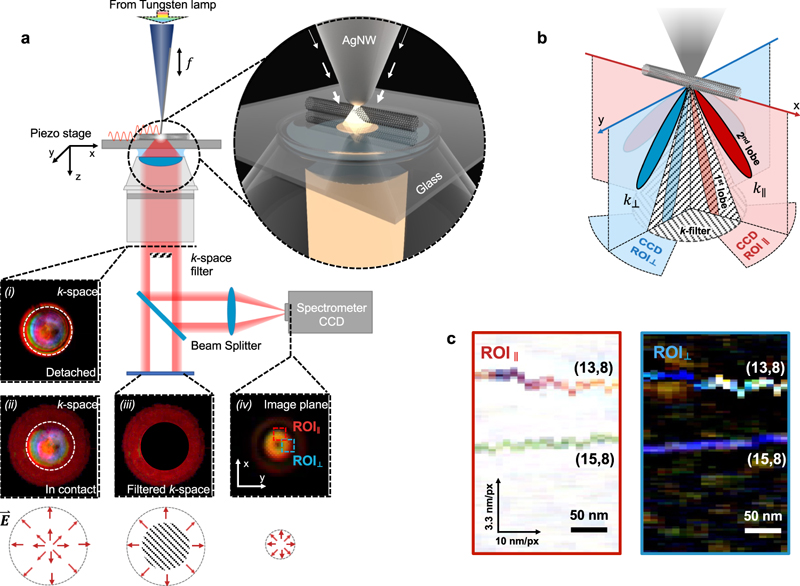| a Sketch of the experiment set-up and the k-space far-field radiation patterns when the probe detached from (i) and in contact with (ii) the substrate. Inset (iii) shows the pattern in (ii) with the low-k components (central portion) blocked by a k-space filter, and (iv) shows the filtered high k components (iii) focused to the image plane of a spectrometer for spectroscopy analysis. Bottom insets: polarizations of the above images. b The radially polarized far-field radiations have azimuthal-dependent components (noted as 𝑘∥k∥ and 𝑘⊥k⊥) that are linked with different regions in the image plane (noted as ROI∥ROI∥ and ROI⊥ROI⊥). c The transmission (left panel) and scattering (right panel) true-color images of two SW-CNTs, separated by ~100 nm from each other, acquired from ROI∥ROI∥ and ROI⊥ROI⊥, respectively. The chiral indices are (13,8) and (15,8), respectively. At each pixel (with a pixel step of 3.3 nm for vertical direction and 10 nm for lateral direction), one acquisition with 0.5 s integration time was recorded to obtain the two spectrums from different ROIs simultaneously. Courtesy of Nature Communications / UCR. |
